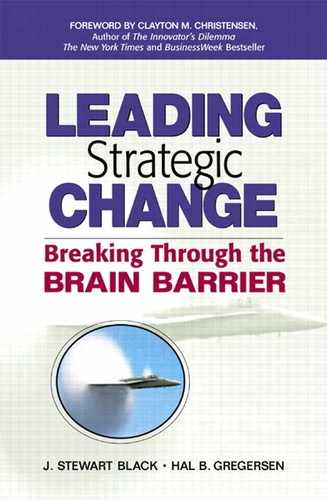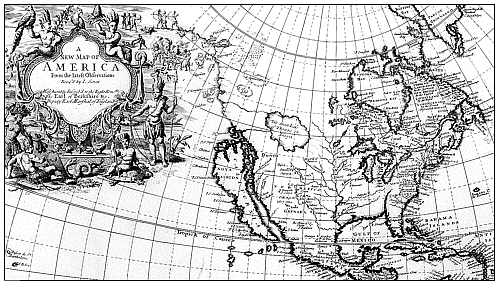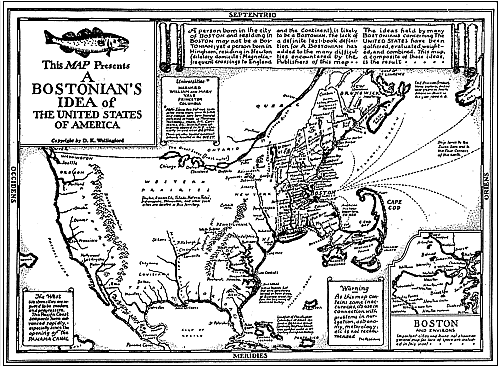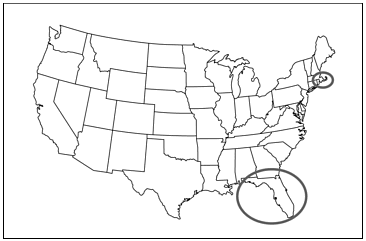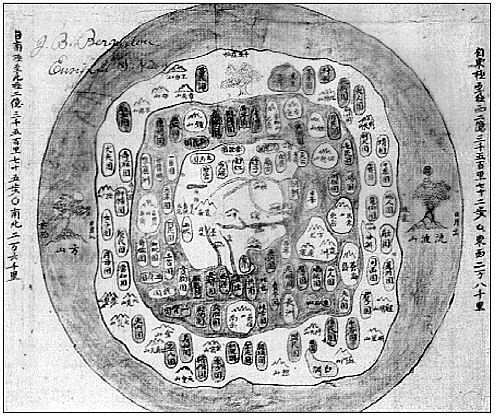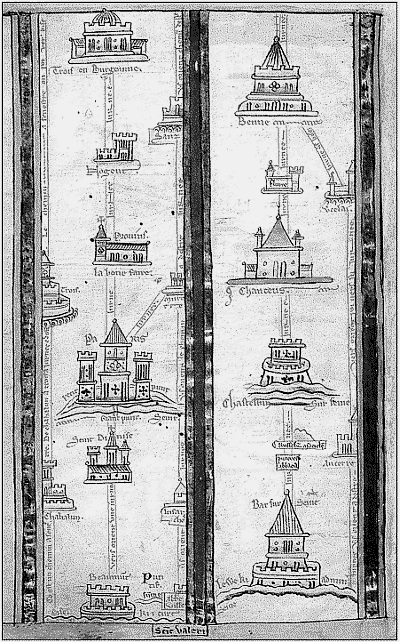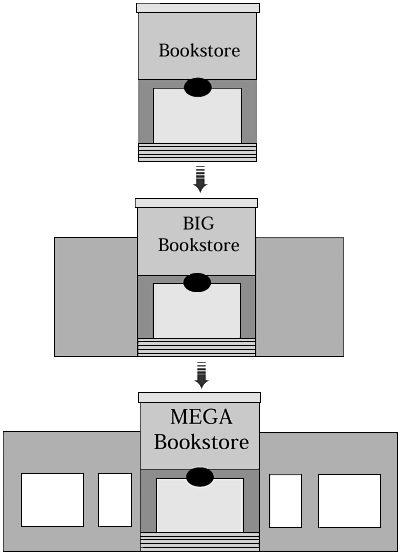Just imagine that the sun is shining, its rays shimmering off the ocean waves as they lazily break on a smooth, sandy beach. A friendly breeze occasionally rustles the palm trees. You are on the beach because you’ve done it the old-fashioned way— you’ve earned it. You’ve worked hard; you’ve been smart. You’ve come up with new technology. You’ve made your company one of the most recognized in the world. You’ve pioneered what would turn out to be one of the hottest management concepts of the late twentieth century—6 Sigma. [1] You are touted in the press as one of the most admired companies. You are the market leader in what is expected to be one of the largest consumer market products ever—the mobile phone. When it was unveiled, your StarTac phone was the coolest phone to own. You are Motorola.
You are doing the right thing and doing it well. This was the case for Motorola from the late 1980s and into the early 1990s. Its analog phones were the phones to own.
But then the environment shifted—radically. First, a new digital technology for mobile phones came along. However, at first it was not clear how superior the sound would be. In addition, the new digital technology would require new and expensive infrastructure. On top of that, most of Motorola’s other U.S. competitors did not seem as though they would make a quick move to the new technology. The one competitor committed to the new technology was some small little company in frozen Finland, a country with a total population of less than that of Manhattan during the day. Besides, no one was really sure how to pro-nounce the company’s name—Nokia. Was it No´-kia (with the emphasis on the “No”) or No-kia´ (with the emphasis on the “kia”)? And what does a company that has been in the forest products business for over 100 years and excels at making rubber boots for fishermen know about high tech? So what if Nokia went with this new digital phone? So what if countries in Europe adopted this new digital standard? Any of those individual countries, such as Germany or France, paled in comparison to the market size of the United States.
The result? Motorola’s first reaction was to deny that this new technology or competitor was anything to worry about.
But then Nokia’s revenue increased fourfold, from $2.1 billion in 1993 to $8.7 billion in 1997. All of Europe adopted a common digital standard that allowed people to use their mobile phones virtually anywhere in the region. This convenience drove even greater demand. In the meantime, the fragmented standards of the United States meant that one phone would not necessarily work in every state.
What did Motorola do? Oddly enough, it put even more investment and effort into its analog phones. It did what it knew how to do—what it was good at—and it did it even more intensely than before.
Well, we all know what happened. Motorola’s share of global mobile phones dropped from about 35% to just under 15% by end of 2000. Nokia, virtually unknown in the United States in the early 1990s (or most of the rest of the world, for that matter) has become one of the top 5 recognized brands in the world just after GE and before Intel. In 2000, nearly 70% of all mobile phone handset profits went to Nokia, with a market share of around 35%. That’s right: Nokia’s “profit share” was double its “market share.”
Clearly, if you do not see a truck racing toward you, you are unlikely to jump out of the way. Likewise, if you do not realize that you are standing on a treasure of gold, you are unlikely to bend down and pick it up. It is no brilliant observation to say that if people fail to see the need for change (whether threat or opportunity driving it), they will not change.
Everybody knows this. This is why in virtually any book on change there is a section on “creating the need for change.” Yes, a felt need for change is required. However, the fact that people fail to see the need or fail to be convinced of the need is compelling evidence that “creating the need for change” is easier said than done. Part of the reason for this is that, by jumping straight to “establish a sense of urgency,” we skip over one of the most important questions that provides the necessary insight to help us actually create the need for change.
The question is, Why don’t people see the truck or the treasure? Why don’t they see the need for change? In almost every case, the need is not invisible. If it were invisible, we could hardly blame ourselves or someone else for not seeing the need. But in most cases, the need for change is visible; it is right there in front of us.
For a moment, let’s return to the Motorola example. (By the way, we do not mean to pick on Motorola. It has lots of company with other firms that have missed a significant threat or opportunity, such as AT&T, Black & Decker, Caterpillar, IBM, Kmart, Lucent, Merrill Lynch, and Xerox.) Still, although Motorola is not the only firm to miss an important threat or opportunity, the threats and opportunities that Motorola faced were hardly invisible. Yet Motorola still did not see, recognize, or acknowledge them until it was absolutely incontrovertible. Instead, Motorola first denied the threat, then worked harder at what it knew how to do well, as illustrated in Exhibit 2-1
So why do we deny? When we see evidence that a strategy, structure, technology, or product was right in the past but now is wrong, why do we ignore and deny the evidence? To understand the first gravitational force that keeps us from changing, we must come to grips with good answers to these questions.
We deny because we are blinded—blinded by the light of what we already see. To understand what this means, it is important to keep in mind that changes are almost always required in the context of a history, and it is usually a history of success. That history of success creates mental maps in us—maps just as real as those guiding us in the physical world. They tell us where to go and how to get there. For example, consider the map in Exhibit 2-2.
This is a map of the island of California. When they first see it, many people think it is a futuristic map of California after a huge earthquake—what Californians refer to as the “big one to come.” The map is actually quite an old one.
For centuries, Europeans were captivated by legends of distant islands with unimaginable wealth. In 1541, Hernán Cortés and a group of adventurers set sail from Spain to discover such an island. Cortés sailed across the Atlantic, portaged through Mexico, then set sail again up the Strait of California, more commonly known today as the Gulf of Baja. Eventually, his provisions ran low, his crew grew nervous, and he was forced to turn back. To understand this better, it may be helpful to remember that the Gulf of Baja is more nearly 1,000 miles long, or over 1,600 kilometers.
For Cortés, failure was unacceptable, so with a little wishful thinking, he created a success. To the east and west, land was in view; to the north and south, water. Cortés reached a conclusion that seemed perfectly logical: He was in search of an island, and an island he had found—La Isla de California. Cortés returned to Spain and reported to the king and queen exactly what they wanted to hear (and what he wanted to believe): California is an island.
Shortly after Cortés’s discovery, another expedition was sent to confirm his claim. This one traveled far up along the Pacific coast, past present-day San Francisco. This overly ambitious expedition also ran low on supplies, and by the time they reached the Mendocino River on northern California’s coast, the crew was stricken with scurvy. With no inclination to dispute Cortés and no absolute evidence that he was wrong, they concluded that the river was really a strait separating the northern part of the island of California from the rest of the continent.
This cartographic myth persisted throughout Europe for over two centuries. Just imagine if you had this map and landed in what is present-day eastern Texas along the Gulf of Mexico. Your objective was to travel overland and reach the island of California. What would you need to take with you? Boats, of course. You would have to haul boats across what are present-day Texas, New Mexico, and the deserts of Arizona, only to discover that California was not an island. In fact, several expeditions provided clear proof that California was not an island, but it was not until 1745 (200 years after the original map of the island of California was created) that a royal proclamation from Spain finally declared “California is not an island.”
Why did it take so long for this map to change? Once the belief that California was an island had been established, reports from later explorers were filtered to fit the existing map; anything contradictory was labeled as false or impossible. From all the king knew, the map worked quite well. Why should he throw it away? Similarly, for Motorola, analog phones had worked quite well for a long time. Why should it throw the map away?
Lest we create the impression that only U.S. firms are blinded by the light, let’s take a look at one of Nokia’s neighbors—IKEA. IKEA is not only one of the largest firms in Sweden, but one of the largest retail furniture companies in the world today.
The mission of IKEA is to create a better everyday life for as many people as possible by making beautiful, functional items for consumers’ homes at the lowest possible price. It launched its first catalog in Sweden in 1951. Since then, it has expanded into 22 countries across Europe, North America, Southeast Asia, and Australia. In 2000, it had sales of nearly $9 billion. In sync with its philosophy and mission, its competitive strategy is based on a value proposition of moderate- to good-quality Scandinavian design furniture at incredibly low prices. This strategy works well around the world for most of the products that IKEA offers, such as curtains or dinnerware. However, successful IKEA strategic map failed miserably for some items, specifically beds and sheets, when it expanded into the United States.
When IKEA began its U.S. operations, it shipped low-priced, moderate-quality, metric-sized beds and bedding to all of its U.S. stores. It advertised how wonderful the beds were—especially at a full two meters in length! IKEA expected the same great success in the U.S. that it had enjoyed in Europe. Unfortunately, sales did not go well at first. What was IKEA’s response? It increased its advertising. Maybe people didn’t know what great metric-sized beds IKEA had to offer. More advertising would surely bring customers into the stores and send merchandise flying off the showroom floor.
How did beds and bedding sell in the United States after that? They quickly became category failures, filling up entire warehouses. Local store and regional managers tried to communicate to corporate headquarters in Sweden that metric-sized beds and bedding would not sell in the United States—despite the fact that they were priced lower than the king, queen, full, and twin-sized bedding found in competitors’ furniture stores.
How did IKEA’s senior managers, who were seven time zones away at corporate headquarters, respond to this local dilemma? “Be more creative. Pull the customers into your store. Any good retailer can sell metric-sized bedding; that’s the solution to your inventory problems.” Anders Dahlvig, CEO of IKEA, is quoted as saying, “Whether we are in China, Russia, Manhattan, or London, people buy the same things. We don’t adapt to local markets.” [2] So, despite local and regional U.S. managers’ constant attempts to convince headquarters otherwise, their bosses in Sweden clung to their strategic map for over two years. Finally, the bursting warehouses won, metric-sized beds and bedding were reluctantly discontinued in the U.S. market, and management declared that metric was not king; king was king; queen was king; twin was king in the U.S. market.
Why did IKEA persist in following its strategic map of metric as king? Because it had worked so well in the past, and IKEA was good at it. Company leaders could not see an alternative map because their vision was full of the successful and working map they already had.
This is a critical point. If people were blank slates, it would be much easier to put new maps in place when organizations attempt to shift strategic directions. But people are not blank slates. Consequently, one of the first keys to effective change is recognizing that people have existing mental maps, and they have them for only one reason—they have worked and they continue to work well! It is not that “an old dog can’t learn new tricks.” Rather it is that an old dog has a devil of a time unlearning old tricks.
Until we recognize that people’s vision for the need for change is blocked by existing mental maps that argue for past success and against future change, we will continue to fail in breaking through the first brain barrier of change. We must recognize that people have strong existing mental maps, and we must know what those maps are. Without this understanding, it is almost impossible to overcome people’s failure to see.
As important as this is, it is also critical to understand that, even when using successful maps, people often use mistaken maps. For example, even though the Island of California worked for a while, it was nonetheless inaccurate and full of mistakes. Thus, even when a map has worked well in the past, the seeds of its future failure may lie in that fact that it is inaccurate and mistaken in the first place! This is important because people often believe that if their map works, it must be correct. Consequently, one key to leading strategic change effectively is to recognize and help others see that a map’s past success does not necessarily correspond to its correctness.
Interestingly, we have found that these mental mapping mistakes have direct corollaries to common mistakes made with physical maps of the real world. By examining actual maps and their errors, we have gained a much better understanding of the types of mistaken mental maps that people regularly use.
Many successful maps have distortions in them that eventually emerge and lead the followers of the map from success to failure. Distorted maps have a tendency to exaggerate some elements of the terrain while diminishing others. This typically reflects the psychological process—found even in cartography—of inflating what you know and deflating what you do not. From a mental map perspective, the extreme state is one in which you believe that what you know is everything and what you do not know is nothing.
How do distorted maps look in actual cartography? Consider the map in Exhibit 2-3.
This is how the United States looks to someone from Boston. As you can see, Cape Cod is of significant size and substance in the Bostonian’s mind. On the other hand, although Florida exists, it is quite small in comparison. Likewise, the Northeast in particular and the East in general are much larger than the humble (but no longer an island) California.
Just in case we have any Bostonian readers who are not quite sure what is wrong with this picture, we have also added a map that more accurately portrays the relative dimensions and sizes of the places in question in Exhibit 2-4.
As a point of interest, this type of distortion is common to us all. Asked to draw a map of their neighborhood, people invariably draw their street and house much larger than they are in proportion to the overall neighborhood that they map out.
Although this type of mistaken map is intriguing, the key question is, How does it apply to the business world? The first important implication is that, although a distorted map may be mistaken, it works as long as one does not venture outside of the known area. The distorted map of the United States is not a problem and works well—as long as you stay in New England. Venture off to Florida and use this map to calculate driving time, and the results will not be positive.
The second important implication is that the distorted map leads you to stay within the exaggerated area. Why would you want to leave Boston or New England? After all, based on the map, it looks as though there really is not much else out there. Consequently, using this mistaken map would quite likely cause you to stay “at home.” Ironically, staying at home increases the map’s success. The more you use it to get around at home, the more successful experiences you will have, and the more convinced you will be that you should hang on to this map. Following the distorted map actually keeps you from encountering evidence of the map’s inaccuracies and mistakes!
It is relatively easy to find business examples of these same dynamics that result from relying on a mistaken, distorted map. One of the more interesting examples is the Kellogg’s company. Located in Battle Creek, Michigan, Kellogg’s has dominated the breakfast table of Americans (especially children) for decades. Kellogg’s had a mental map of the world that exaggerated what it knew (breakfast cereal in the United States) and deflated what it did not know (other food products for the rest of the world). As a consequence, Kellogg’s view of its existing and new products, as well as existing and new markets, looked like Exhibit 2-5.
Just as a Bostonian’s exaggerated view of the size of Cape Cod, Kellogg’s greatly inflated the size of breakfast cereal in the United States, compared with the rest of the picture. For nearly 40 years, this strategic map worked just fine at Kellogg’s. As a matter of fact, given how small the rest of the world seemed, based on this map, why should Kellogg’s venture far from home, in terms of either products or markets? The prize looked just too small to worry about. So it didn’t; it stayed at home within the safe boundaries of its map.
What happens, though, when the home market begins to shift? What happens when people eat breakfast less at the table and more on the run? What happens if generic makers of cereal increase their quality until they begin to rival Kellogg’s but offer prices that are 20–30% below Kellogg’s? What do you do if you’re an executive at Kellogg’s? At first, you deny. It is just a temporary blip, and if it is more than temporary, it is confined to a small segment of the market.
What do you do when you see sales start to flag and flatten, and you simply cannot deny the shifts? What do you do when you can deny the shift no longer? You do what you know how to do. You increase trade promotions (i.e., money for retailers to push your product). This is exactly what Kellogg’s did, but unfortunately, it did not increase sales much, and it actually hurt the company’s earnings.
Based on this distorted mental map of the world, would you explore new products? Look at how small that space is. The answer is that you wouldn’t, and Kellogg’s didn’t. The company did not introduce a single new brand between 1983 and 1991. Even though it successfully introduced Pop-Tarts in 1964, it did not introduce a single new snack-food success until 27 years later, when it launched Nutri-Grain cereal bars.
What about new markets? With this distorted mental map, would you aggressively explore new markets? Again, look at how small that space is. In talking with executives at Kellogg’s, several pointed out that they were “into” international markets in a big way during the 1980s and 1990s. The company was operating in roughly 30 different countries. But if you measured revenues and profits and not just countries in which Kellogg’s operated, the strategic, financial, and marketing emphases were completely in harmony with the distorted mental map. The vast majority of efforts and returns were focused on the home market. From this case example of Kellogg’s, let’s review several key points.
First, just because a map works does not mean that it accurately reflects all the terrain. Breakfast cereal in the United States was not nearly as large as it seemed to Kellogg’s executives in the context of the global breakfast-food territory.
Second, as long as the terrain in focus doesn’t change and you don’t venture outside the exaggerated area of focus, the map (mistaken as it may be) continues to work fairly well. The longer it works, the more convinced you become that it is, indeed, correct.
Third, even when signs start to emerge that the map is not working as well today as in the past, its distorted nature creates a logical incentive to stay at home. After all, if the noncereal and non-U.S. parts of the map are as small as they appear, they are not really worth venturing into.
Fourth, even as evidence starts to mount that the terrain has shifted and the map is just plain wrong, there are great pressures to respond to shifts by doing what you know how to do—rather than venturing into unknown territories or paths. Like Kellogg’s, you flood the market with sales promotions, rather than make serious attempts to launch new products or conquer new lands.
Until Kellogg’s changed its strategic map maker (new CEO, Carlos Gutierrez), no threat or opportunity was seen because Kellogg’s was so blinded by the light of what it already saw. Later in the book, we will continue the Kellogg’s story and show how it has tried to change the strategic map in executives’ heads to grow the company.
Another common mistaken map is what we might call central position maps. In the world of actual maps, this is the tendency to put yourself (and your country) in the center and have everything else revolve around you.
If you want to do something fun the next time you are in a foreign country, go into a map store and take a look at a world map produced by publishers in that country. Invariably, the map will place that particular country in the center of the world. This tendency has a long history. Perhaps it is best illustrated with an old map of the Central or Middle Kingdom—China. The two Chinese characters that constitute the name China literally mean “central or middle kingdom.” As the map in Exhibit 2-6 illustrates, China saw herself at the center of the world then, as well as now.
We might think of IKEA as having also viewed the world this way. As its CEO pointed out, “We don’t adapt to local markets.” It is not the case that IKEA saw Sweden or even Scandinavia as distortedly large and the rest of the world as small. Indeed, it had an accurate map of the size of different furniture markets in the world. Still, IKEA saw itself and its metric measurements as the center of the world. Everything else revolved around it.
As we have already stated, you get a centered map established and accepted only if it works. Metric measures worked for IKEA. For example, IKEA effectively sold metric chairs all around the world, including in the United States. No one in the United States cared (or even knew) that most chairs IKEA sold were .78 meters from the floor to the seat. The more this metric map works, the more you begin to believe that the world revolves around you. With metrics at the center of the universe and with literally billions of dollars of success behind it, why would execu-tives at IKEA not resist changing this strategic map? Of course they would resist, and they did.
We need to be careful, however, in providing so many large company examples that we create the impression that only big organizations are subject to these mistakes. These dynamics are just as true for individuals. In the case of central position maps, we also see individuals making this mistake all the time. For example, we knew of a manager sent on an international assignment who had “speak up” at the center of his mental map of interpersonal effectiveness. He explained that “speak up” was the phrase he used (and that the company used) to describe in shorthand the belief that the best way to make decisions, resolve conflicts, and communicate in general was to speak up, to say what you mean and mean what you say. This, he explained, included silence. If you weren’t saying anything, it meant that you had nothing to say.
This manager was sent to Thailand. Unfortunately, most of his Thai workers did not share this same mental map of effective interpersonal relations. They were often silent when they, in fact, had things to say. Specifically, they were often silent when they disagreed with this individual. They even said yes when they really meant no. It did not take this manager long to discover that people said nothing when they had something to say because later their actions did not follow what he thought their silence meant. As these types of experiences began to pile up, he concluded that the Thais did not say what they meant and did not mean what they said.
Using his mental map with “speak up” at the center, he quickly formed interpretations of Thai workers and their behavior. He told us, “These Thais do not say what they mean and I can’t trust them to mean what they say. I’m afraid that many of them are just dishonest, weak, and two-faced. With employees like this, I’m not sure we can be successful in this country.” He was right. The company had difficulty being successful. However, the firm’s struggles were not because of its Thai employees, but rather because of its country manager.
Given his interpretation of the Thai employees, the country manager’s course of action was to send some key employees to a training program on speaking up. He pushed what he knew. Interestingly, the more the employees learned about speaking up from the training program, the more they resisted it because they did not think it would work with their Thai subordinates, and they did not want to try and fail.
Speaking up for this country manager in Thailand, like metric for IKEA, was at the center of his map. Things in the past had successfully revolved around this center. The common elements in these situations are that, when the map begins to fail, whether it is for Motorola, IKEA, or an individual manager, the first reaction is to deny the failure, and the second reaction is to try harder by doing even more of what you know how to do best.
A third type of mistaken map is what we call a strip map. A strip map has a restricted or narrow view of the terrain and a fixed sequence for getting from one place to another. Like the other mistaken maps, this one has been with us for a very long time. The strip map in Exhibit 2-7 shows how to get from London to Rome. As you can see, there is a fixed sequence of going from one monastery to the next and a rather narrow view of the path.
Strip maps get established because particular sequences and a narrow path have been shown to work in the past. When we show this old strip map to people, they often laugh. “How could anyone follow such a narrow map?” they ask. When drawn out on paper, strip maps do look rather narrow. How can people fall into the strip-mapping mistake? It is actually quite easy. Although the narrowness of a strip map is obvious when it is drawn out on paper, that narrowness is often missed when the map is seen in our mind’s eye. Why? The answer lies in the success of the map. If we follow the strip map sequence, stay within the narrow parameters, and succeed in reaching our desired destination, why would we necessarily think about alternative sequences or other paths off the beaten track to the left or the right? The answer is that we don’t. Who has time to argue with success? The sequence worked, so let’s not think too much about other alternatives and, instead, simply use the map again.
Consider Barnes & Noble for example. CEO, Lennie Riggio, got his start in selling books when he dropped out of New York Uni-versity in 1965 and opened SBX (Student Book Exchange). By 1971, he owned five SBX college bookstores. That year, he bought a struggling book shop in Manhattan called Barnes & Noble. In 1979, he bought Marboro Books, which had six stores. At this point, the strip map was being established and reinforced. The mental strip map looked something like this: To sell more books, own more brick-and-mortar book shops.
The strip map was further reinforced as more brick-and-mortar bookstores were built. As Riggio built more stores, he also made them bigger. Whereas many of his early bookstores carried 20,000 titles, the newly constructed bookstores carried twice that number. The strip map was further established and reinforced: To get to the destination of more sales, buy or build more brick-and-mortar stores and make them bigger.
The entrenchment of this map solidified when, in 1986, Riggio, using junk bonds and his company, Barnes & Noble (37 total bookstores), bought B. Dalton (over 800 total bookstores). The combination gave Barnes & Noble nearly 850 bookstores, most of them twice the size of the original Barnes & Noble store in Manhattan. In fact, with the acquisition of B. Dalton came not only many larger bookstores, but a few “mega” bookstores, as well. These mega stores carried over 100,000 titles.
Unlike nearly all of its regular big bookstores, which were in shopping malls, the mega bookstores were so big that they were built as separate, stand-alone businesses. Inside these brick-and-mortar shops, Riggio added couches, coffee bars, music CDs, and free copies of the New York Times Book Review. Barnes & Noble built scores and scores of these mega bookstores throughout the 1990s. In fact, Barnes & Noble built 95 mega stores in 1995 alone.
By 1995, the strip map was firmly entrenched and reinforced by millions of dollars of success: To sell more books, you need to have (build or buy) more and bigger brick-and-mortar bookstores. In fact, the map was so successful that even though the U.S. book market grew by less than 1% per year during the 1990s, Barnes & Noble’s market share increased from 7% to over 15% during the same time period. This increased share came largely from small, independent bookstores. By July 1998, Barnes & Noble’s stock price hit an all-time high of $48, which represented a 220% increase over its price just two years earlier. Barnes & Noble’s strip map (Exhibit 2-8) looked brilliant.
What happened? In July 1995, Jeff Bezos, CEO of Amazon.com, decided to follow a different map to selling books. Rather than restrict customers to only 100,000 titles, he would make over a million titles available to them. And rather than have bricks and mortar, customers could click in their orders. For three years, Barnes & Noble totally dismissed Amazon.com. However, when after three years’ time, Amazon.com had 8.4 million registered customers and Barnes & Noble had just 1.7 million, shareholders of Barnes & Noble took notice. Many sold their Barnes & Noble stock, and the price tumbled by nearly 50%.
But you may be thinking, “Wait a minute. Look at what has happened to Amazon.com. Its stock price has crashed, and dot-coms are now dot-bombs.” This is true. However, just as we were irrationally exuberant about the future of Amazon.com, we run the risk of being irrationally pessimistic about the future of online book sales. We should not confuse Amazon.com’s big spending to add everything from CDs to garden tools and the resulting losses as evidence that online book sales will disappear along with Amazon.com’s stock price. Online book sales continue to grow and cannibalize book sales from other brick-and-mortar sources. If e-books take off, and we then are able both to order and receive books via the Internet, many predict that online book sales will rival brick-and-mortar-based book sales.
But let’s not get sidetracked. The main point is that the strip map of obtaining more sales through more and bigger stores was so entrenched in Barnes & Noble that it took a massive loss in market value before the grip of the mental map and its inherent restriction were changed. In fairness, once recognized in 1998, Lennie Riggio did create Barnesandnoble.com. Unfortunately, at that point, he was playing a serious game of catch-up. By that point, Amazon.com had a 75% percent market share of all online book purchases.
In summary, several key insights grow out of our strip map discussion. First, like all mental maps, strip maps get retained only if they work. A certain sequence of steps and narrowness of territory gets incorporated into a strip map only if it works. Second, as long as you don’t venture outside the narrow map, a strip map will likely continue to work. Third, only after a new sequence is proven to work or after a different route to the desired destination is shown to be successful is the old sequence challenged. Unfortunately, by that point, a successful strip map (even if mistaken), like all mental maps, is extremely difficult to change and breaking through this brain barrier is as likely as hitting Mach 1 in a Cessna.
Whether a mental map is correct or mistaken, the longer it works, the harder it is to change. In a sense, all mental maps successful enough to be retained take on a final characteristic that we see in the world of cartography, as well as in business. This is the tendency to believe that the only way to see the map is the way it has been seen. This is important enough to bear repeating: We mistakenly think that the only way to see a map is the way it has been seen. For example, consider the map in Exhibit 2-9. When they first see this map, most people instantly think that it is upside down. After all, Australia is not “up over,” it is “down under.”
But consider for a moment that you were an alien traveling from a far-off galaxy and you stop your spacecraft by the moon to look at our world. Would north necessarily be up? In zero gravity, isn’t it just as reasonable for Australia to be up over as down under? The logical answer is of course, yes. However, when we show this map to people around the world, we invariably find them tilting their heads to one side until the world starts to look right side up again—with the exception of Australians, who think it looks quite right just the way it is.
It is important to note here that, unlike the previous three examples, the traditional right-side-up map is not mistaken and is, in fact, accurate and correct. However, its accuracy and correct-ness are no guarantee that it will continue to work as the only way to get things done. We will come back to this at the end of the book, when we talk about practical things you can do to reduce the chances that you get stuck in holding on to maps that need to change.
Still, the important thing to keep in mind is that, if we see a map a certain way often enough, we end up believing that it is the only way for it to be seen. The longer we see the world as consisting mostly of breakfast cereal in the United States, the easier it is to believe that is the only way to see the world. The longer we see metric-measured beds as the center of the world, the easier it is to see metric beds as the only beds. The longer we see bigger brick-and-mortar bookstores as the path to greater sales, the easier it is to see them as the only path. Given enough time and exposure to any map, it becomes the “right” map. As a result, we diminish our capacity to see the world any other way.
Our main points in this chapter are straightforward. First, to fly, we have to understand the power of gravity. The first gravitational force relative to change is that which keeps people from seeing impending threats and opportunities. We have tried to illustrate that people do not see even obvious threats and opportunities because they are blinded by the light of what they already see—the mental maps that have worked for them in the past. Second, we pointed out that even when people have constructed successful mental maps, those maps are quite often flawed. Just as in actual cartography, people create successful but distorted maps, centrally positioned maps, or strip maps. The longer these mistaken maps work (or the longer we believe they work), the more difficult they are to change. Unless we understand the general nature of these mental mapping mistakes, it can be difficult to overcome them. Unless we overcome the power of mental maps, we have little hope of generating enough lift to get our change project off the ground.
[1] *6 Sigma is a highly disciplined approach to developing and delivering nearly perfect products and services to customers. The core of 6 Sigma focuses on identifying defects in a production process and eliminating them to get as close as possible to zero defects.
[2] *Nicholas George, “One Furniture Store Fits All” Financial Times, February 8, 2001, p. 11.
